WHENEVER I WRITE about Flying Nun, it seems the heavens break, and scorn rains down upon me.
It’s not that I don’t like any of the music from that label. In fact, my vinyl and CD shelves are groaning with Flying Nun 7-inchers, LPs and CDs.
No, it’s because I just don’t accept that Flying Nun, as a label, is the be-all and end-all of NZ music, a catchall quality control mechanism that sums up all that was/is good about “our” music.
And I’m not sure that Roger Shepherd – Flying Nun’s instigator and re-throned guru – would disagree with me. He can be justly proud of the label’s achievements. But if I was to name my favourite NZ tracks and albums from the ‘80s and ‘90s, a pretty overwhelming majority of them would probably be from other independent labels that weren’t at the right place at the right time.
The problem is that, as a brand, Flying Nun – especially internationally – has come to represent all that’s great about NZ music, and it’s simply because overseas audiences (and to a degree, even local punters) haven’t heard (of) all those great sides that emanated from more short-lived operations, or came from the “majors”, where they were quickly deleted.
“The Nun” has the brand on its side, together with a recognisable “lo-fi” aesthetic and ‘60s-leaning musical values that make a trawl through its catalogue comfortably nostalgic, with rare exceptions.
My big beef with the label isn’t the holier than thou attitude it had in the ‘80s, or its roster, or the poor recordings of its early artists, but of a media, and audience, that embraced the label as an NZ exponent of alt-rock. We all now know that alt-rock later got rebranded indie-rock, and it’s just about the most conservative branch of “contemporary” music. At its birth, alt-rock promised a revolution, via punk, then new wave. But instead of continuing to explore, it pretty much contracted and died, and by the mid-‘80s, internationally, musically monochrome groups like REM were the standard-bearers of alt-rock.
The division between alt-rock and “mersh” pop became so deep that it took a brave fan to traverse both categories, and a braver musician to incorporate styles and aesthetics from both. A similar division had exposed itself in the late ‘70s between “authentic” rock like Dire Straits and disco music; and once again in the ‘90s, we saw pure hatred from alt-rock fans towards various dance movements.
I’m not accusing Flying Nun of being intrinsically musically conservative. In fact, it was all over the show. And in groups like the 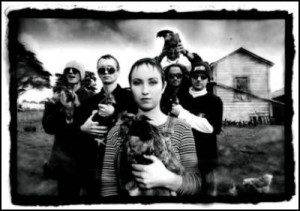 Headless Chickens it showed that it was capable even of signing a band that combined grotesque industrial shapes with dance moves, and brilliantly. No, I’m leveling my accusometer at certain elements of the music media, who found a lazy way to sum up the greatness of NZ rock music in creating the legend of Flying Nun.
Headless Chickens it showed that it was capable even of signing a band that combined grotesque industrial shapes with dance moves, and brilliantly. No, I’m leveling my accusometer at certain elements of the music media, who found a lazy way to sum up the greatness of NZ rock music in creating the legend of Flying Nun.
As we all know, if a fib is repeated ad nauseum, it becomes an accepted “truth” by default, and that’s what happened with Flying Nun. And there was hell to pay if you chose to deny the Flying Nun mythology. So, when I wrote a piece for the NZ Listener debunking the label in 2001, I was vilified: Russell Brown slandered me, bFM DJs ranted about the temerity of even suggesting that the mythology could possibly be even slightly faulted, and even the Sunday Star Times writer Grant Smithies wrote an enraged letter.
To a degree, my opinion piece played the devil’s advocate. I suggested that Flying Nun killed NZ pop. That was going a bit too far, but at the time, the hype about the label was so overwhelming that I felt it needed a scathing rebuke just to get close to balancing the scales. What disturbed me was that the response suggested that Flying Nun was simply above criticism, and that any attempt to do so should be castigated and if possible, nipped in the bud. This was musical and brand loyalty totalitarianism at work.
AT THIS POINT I would like to repeat/emphasise: there are many Flying Nun discs I like, and some I even think are slices of genius. I also hasten to add that, while my opinion piece all those years ago riled some in the media, I’ve always been on friendly terms with Roger Shepherd (recently contributing some bio raves to the Flying Nun website) and even call some of the musicians who released records through the label “friends”.
So here we are, with Roger Shepherd back running the label after many years in London (this time managing things from Wellington, instead of Christchurch), and here I am, with two fairly recently released Flying Nun compilations to cogitate.
Tally Ho! – Flying Nun’s Greatest Bits was released late last year and was part of the label’s 30-year-anniversary celebrations. It’s a double disc that runs from the label’s early sides right through to its latest. 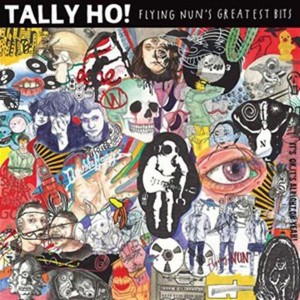
Although it doesn’t have the aesthetic consistency of the label’s famed compilations of the ‘80s and early ‘90s, it provides a useful oversight of literally 30 years of musical endeavour, and equally (as one would expect) exposes a few paradoxes.
I won’t mention every single song on this double disc, just those that warrant some discussion.
Fittingly starting with The Clean, ‘Tally Ho!’ is as tinny, brattish and irresistible as ever, although it does signature the label’s/budget limitations in 1981 – the playing is as rough as guts, the sound is thin, the organ sound is nasty, and really, when compared with the group’s overall catalogue, it’s a bit of a one-off novelty. But arguably the best group on Flying Nun (I don’t think so, but the vast majority of critics would appear to think so) only has the one selection on this compilation.
What we do get, however, is ‘Can’t Find Water’, a song from the Great Unwashed, a Clean offshoot, whose double-EP is still one of my all-time favourite Flying Nun projects. To me, it’s the inclusion of Peter Gutteridge that gives this band that special something that The Clean always lacked. The Great Unwashed, like the later Gutteridge group Snapper, had a sense of otherness that just can’t be matched. Later, we get Snapper’s insanely great ‘Buddy’.
The Verlaines were always problematic to this listener. While leader Graeme Downes was influenced by the classical music he was studying at the time, the performative ability of his group was poor. Classical music lends itself to virtuoso abilities; instead, Verlaines’ music was hampered by one of the least appealing guitar strums on a label full of guitar strums, and Downes constantly straining to reach notes that he shouldn’t have attempted. While the included selection, ‘Death & The Maiden’, certainly has (anthemic) attributes, I find it an unrewarding listen to this day.
Martin Phillipps of The Chills was as infatuated with the hippy glow of the psychedelia of the late ‘60s as Downes was of 200-year-old dead guys, and ‘Heavenly Pop Hit’ showed just how self-referential the band could be. There’s no denying the craft, and it’s a likable tune, but it also shows Phillipps’ weakness for nostalgia, even though his heroes were blighted by drug experiences. But we’ll leave that discussion for another day.
Sneaky Feelings were oft-criticised as not fitting into the Flying Nun aesthetic, and their leader, Matthew Bannister, ended up writing a scathing book in which all that stuff was churned over. Essentially, the group’s influences were moored in late ‘60s American folk-rock, with a little psychedelia at the edges, which was opposed to the cooler-than-thou Velvet Underground fixation many of the label’s band had at the time. While I dare to like some of the group’s songs, ‘Husband House’ (the selection here) isn’t one of them. It seems predicated to show Bannister as wet, so over-emotive and “sensitive” is the vocal that the listener starts feeling all clammy.
Flying Nun wasn’t without its hippies, but you could only really be a hippy if you were a girl. Hence, Look Blue Go Purple and their charming song, ‘Cactus Cat’. Charming, but naff, but forgivable, maybe.
Suddenly, there’s a sea change. Come ’87 and on Straitjacket Fits’ singularly amazing ‘She Speeds’, 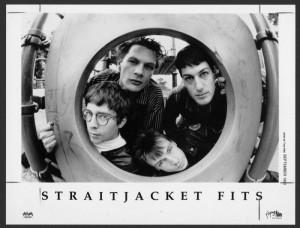 it feels like everything has been adrenalized. And although ‘What’s Going On’ is one of Fetus Productions’ tamer tracks, it still contains a contained malevolence that distinguishes it, and turns it into a classic of its time. Had the Headless Chickens’ ‘George’ been stitched with those two others, we would have had an amazing triplet. Its probing body-politic lyrics are still vaguely disturbing after all this time, and the song is a slightly flawed masterpiece.
it feels like everything has been adrenalized. And although ‘What’s Going On’ is one of Fetus Productions’ tamer tracks, it still contains a contained malevolence that distinguishes it, and turns it into a classic of its time. Had the Headless Chickens’ ‘George’ been stitched with those two others, we would have had an amazing triplet. Its probing body-politic lyrics are still vaguely disturbing after all this time, and the song is a slightly flawed masterpiece.
As is Chris Knox’s ‘Not Given Lightly’, of course, but the repetitions this song has been given, making it an alt-Kiwi anthem, makes it impossible to listen to with fresh ears.
But going back to the beginning for a minute. The Pin Group still sound like Joy Division wannabes, but The Gordons (‘Machine Song’) sound like nothing else on the planet.
Other stonking great noise-makers on disc two include: Bailter Space (the Gordons retooled and reimagined), Skeptics (a Palmerston North group who, like the Gordons but with an entirely different sound, created something unique out of industrial waste), Dimmer (brilliant rifferama), and HDU (a band of sonic sculptors who will probably be studied by academics at some undefined point of the future).
In short, there’s loads of good stuff. Also worth checking? The very loose gonzo moves of Solid Gold Hell, the cool electro of really very recent group F In Math, and the even better intelligent pop constructions of Grayson Gilmour. 
What’s not good? Well, Jean-Paul Sartre Experience had peaked and gone to seed by the time they did the British-infatuated ‘Breathe’, and although I’ve tried, I’ve never understood the appeal of either the Mint Chicks or the Phoenix Foundation, whose intellectual pop sends me to sleep every time.
In short (ha!) Tally Ho! (the album) is generously packed with greatness, and has a few things to prove, as well. There are the great one-offs, like Shayne Carter’s single with Peter Jefferies, ‘Randolph’s Going Home’. But mostly, as a compilation stretching from 1981 to 2011, Tally Ho! shows that Flying Nun isn’t defined by those jangly guitar bands that play such a big part in its mythology.
A compilation that really encapsulated what Flying Nun stood for in the ‘80s would have to include great songs that this one doesn’t: The Chills’ ‘Pink Frost’, the Sneaky Feelings’ of Send You. But what Tally Ho! does is pitch the diversity of artists rather than the mythology of the label, or the coolness of a certain group and bands and their methadone aesthetics. I like that.
BUT WHAT OF the more recent, Bruce Russell-curated compilation, Time To Go – The Southern Psychedelic Moment: 1981-86?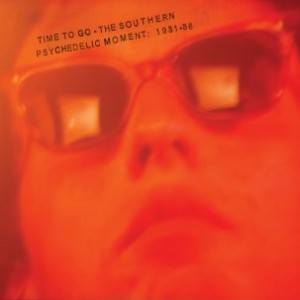
Russell is a member of the Dead C – a group that is considered the holy grail of NZ music by some English and American critics – and when Flying Nun upped and left the South Island, Russell started his own labels, Xpressway and Corpus Hermeticum, as his own music (and the music on his labels) became more extreme and improvisation-oriented.
Russell’s pitch, as outlined in the accompanying essay, is that the Flying Nun gang/ethos was a kind of punky switched-on psychedelia that could only have happened at the bottom of the bottom of the world.
The album is his personal selection of 20 tracks that, inevitably, traverses the less commercial territories, and tries to convince us that the true underground was going on in Dunedin (and to a point, Christchurch) from ’81 through ’86.
Except that his thesis is flawed, and his selections are as weighted as much by nostalgia as anything else.
Why both Flying Nun compilations contain songs by the Pin Group is inexplicable. Their track on Time To Go again takes all the doom of Joy Division and goes precisely nowhere with it. It’s utterly derivative, but more pompous and ponderous than prog rock ever was, as well as being vaguely inept, and with an Ian Curtis puppet on vocals. Naturally, it’s poorly recorded.
Russell’s selections are, at times, simply bizarre. If one’s assessment of the Clean rested on ‘In The Back’, there wouldn’t be much to go on: just less than two minutes of fooling around with psychedelic guitar with what sounds like some sort of distortion device.
The Playthings are notable for bequeathing Jay Clarkson and the Expendables to the world, but ‘Sit Down’ is an almost embarrassing X-Ray Spex-style piece of proto-punk. Even Wellington’s Wallsockets did it better than this.
Again, the choice of ‘I Just Can’t Stop’, a too-short track in which The Gordons sound like they’re rehearsing, fails to get across what was so very great about that band.
Luckily, there are a few genuinely fantastic pieces here. The Builders/Bilders/Bill Direeen tracks from the ‘80s are seldom heard, and it’s a joy to reacquaint myself with one of the most mindbending pieces of lucid psychedelia to have ever come from our shores, ‘Russian Rug’. This track is still, after all this time, genuinely trippy, and gets there by mining the darker side of psychedelia that The Doors and Jefferson Airplane occasionally navigated themselves to. That, and some raw but deft cut-up/collages that bring to mind Faust at their best.
After that shining example, it’s inevitably back down hill. The Victor Dimisch Band captures a certain melancholy about Dunedin on ‘It’s Cold Outside’ without being spectacularly good, and Tall Dwarfs’ ‘Clover’ is a sound construction that is appealingly odd without stumbling in to any obvious stylistic clichés.
Again, where Russell could have strengthened his hypothesis by including something really good by The Chills – on those occasions in which they eclipsed their dippy psych influences – here we get a generic live take of ‘Flamethrower’ with a particularly tinny organ.
25 Cents, however, is about as bad as it gets. Yes, I know they were one of Flying Nun’s first ever releases, and I’ve even got that “rare” EP buried somewhere in my collection, but it’s just not much chop. ‘Don’t Deceive Me’ reminds me of the very worst of Wellington’s “Terrace scene” bands a couple of years’ previously.
Again, things pick up with the Stones’ ‘Down And Around’, a track that takes its good time getting its claws into the listener, but eventually hints at real off-kilter alt-pop greatness – and contains one of the most memorable coruscating guitar riffs to have etched itself on Kiwi vinyl.
And again! The Great Unwashed, on ‘Obscurity Blues’, sound semi-acoustic and dreamy and just superb, and after all these years I still can’t explain why I love them so much.
Next to the Great Unwashed, Sneaky Feelings once again come across as rather clammy and wet, but on its own terms ‘Not To Take Sides’ is excellent. Perhaps, however, not fitting, and not at all an example of the Dunedin psychedelia Russell raves about.
Scorched Earth Policy once again taps into a similar malevolence perpetuated by those Wellington post-punk bands of the late ‘70s, and once again, it’s less effective and more inept. I wonder if Russell ever experienced that Wellington scene – or does he really think this stuff is unique?
The Shallows belong in the same category as the Pin Group: Curtis vocals, inept strumming.
And then, he goes and chooses Look Blue Go Purple! ‘As Does The Sun’ is pleasant, inept, hippy twaddle, with flutes. Three words: The Moody Blues.
George Henderson (of The Puddle) may well qualify as Dunedin’s great unsung (or undersung) genius, but again, the no-fi ‘Junk’ (lyric snippet: “here, take this, stick it in your arm!”) isn’t the best advert for that genius.
The final four tracks are all less than memorable, and that includes the Double Happys’ ‘Some Fantasy’.
It’s a pity that Bruce Russell was commissioned to come up with what turns out to be a disappointing and non-representative selection of nominally Flying Nun tracks to support a flawed thesis. It’s a pity that someone hasn’t thought to put together a really good selection of post-punk NZ material from the late ‘70s and early ‘80s that really does sum up the malevolent, actively oppositional spirit of the times, but doesn’t restrict itself to Dunedin. GARY STEEL

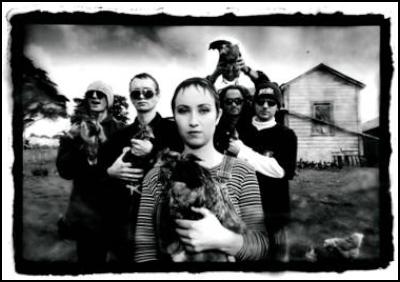


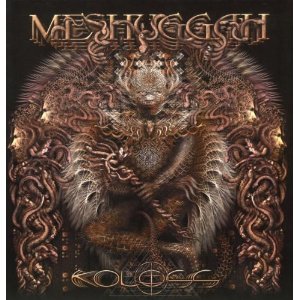

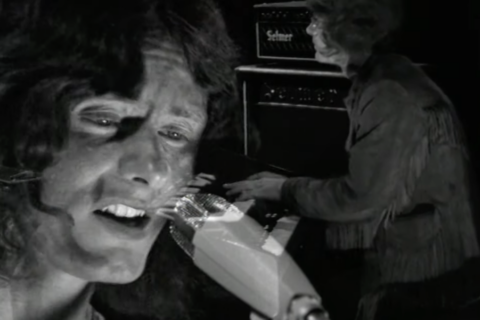


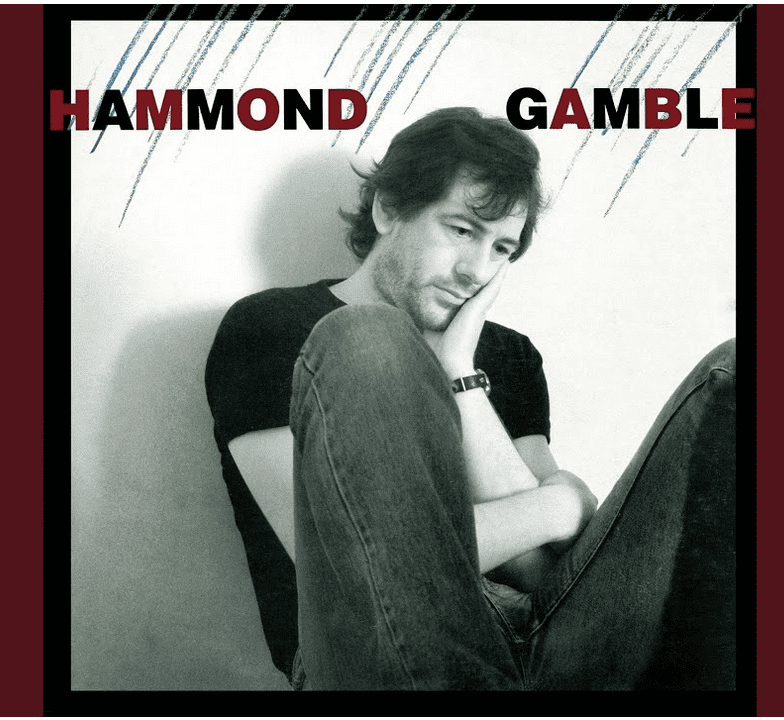
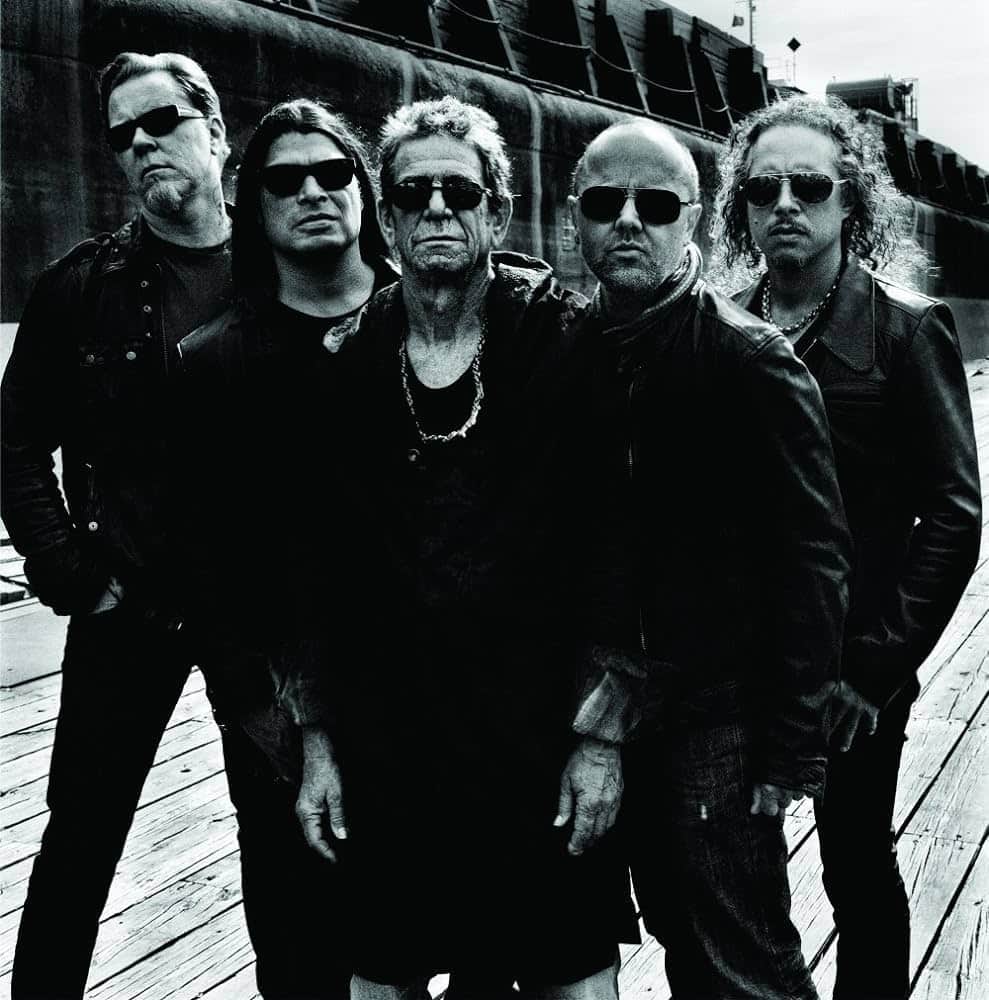

Scorced Earth Policy were a Christchurch band. Otherwise I generally agree that the somewhat academic title and thesis is a stretch, given the actual track list.
I believe Bruce Russells band is called the Dead C not the Dead Sea, also there was no Victor Dimisich Per se. That was just the band name. The singer, who’s currently of The Terminals was Stephen Cogle.
Thanks John and Grant, I have amended the piece accordingly.
“No, it’s because I just don’t accept that Flying Nun, as a label, is the be-all and end-all of NZ music, a catchall quality control mechanism that sums up all that was/is good about “our” music.”
Who said it was/is?
Aren’t you tilting at windmills?
Darren, you need look no further than the latest issue of The Wire for an article about Bruce Russell’s compilation, where Byron Coley writes that “most” of the best NZ music is on the Flying Nun label. Other examples are rife.
I’m not against revisionism, but careful with the details – it’s Dead C, and Victor Dimisich is a band, not a singer-songwriter. At least they didn’t include Dunedin on 45. I thought you were a Joy Division fan – Roy Division had its moments, but Roy Montgomery’s solo stuff is way better, but by then off the label. You seem to be arguing for a Kevin Hawkins compilation – probably too little recorded.
Adam – note the above comment: “Thanks John and Grant, I have amended the piece accordingly.” So, thanks Adam, article had already been amended accordingly. Roy Division? Excellent.
Adam – Siltbreeze are still I beleive interested in a live Shoes This High vinyl release beyond that who knows ? there were some solo studio recordings and a few live solo gigs one of which I rather treasure and lot of rather lo fi fishschool recordings that will require scrutiny one day